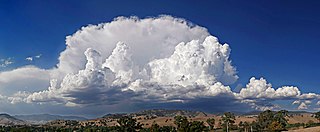
Mormonism is the predominant religious tradition of the Latter Day Saint movement of Restorationist Christianity started by Joseph Smith in Western New York in the 1820s and 30s. After Smith was killed in 1844, most Mormons followed Brigham Young on his westward journey to the area that became the Utah Territory, calling themselves The Church of Jesus Christ of Latter-day Saints. Other sects include Mormon fundamentalism, which seeks to maintain practices and doctrines such as polygamy, and other small independent denominations. The second-largest Latter Day Saint denomination, the Reorganized Church of Jesus Christ of Latter-day Saints, since 2001 called the Community of Christ, does not describe itself as "Mormon", but follows a Trinitarian Christian restorationist theology, and considers itself Restorationist in terms of Latter Day Saint doctrine.
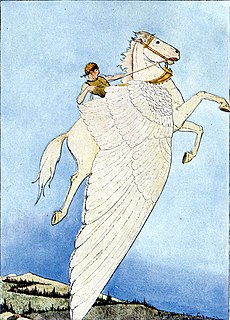
Pegasus is a famous pterippus, a mythical winged divine stallion who is one of the most recognized creatures in Greek mythology. Although often misused in popular culture, the term "Pegasus" is a proper noun, referring to a particular character, whereas the term "pterippus" is the generic name for the species of winged horses. Pegasus is usually depicted as pure white in color. Pegasus is a child of the Olympian god Poseidon. He was foaled by the Gorgon Medusa upon her death, when the hero Perseus decapitated her. Pegasus is the brother of Chrysaor and the uncle of Geryon.

Wilhelm Heinrich Immanuel Bleek was a German linguist. His work included A Comparative Grammar of South African Languages and his great project jointly executed with Lucy Lloyd: The Bleek and Lloyd Archive of ǀxam and !kun texts. A short form of this eventually reached press with Specimens of Bushman Folklore, which Laurens van der Post drew on heavily.
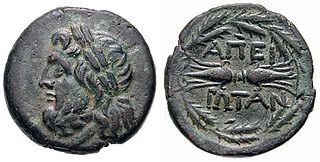
A thunderbolt or lightning bolt is a symbolic representation of lightning when accompanied by a loud thunderclap. In Indo-European mythology, the thunderbolt was identified with the 'Sky Father'; this association is also found in later Hellenic representations of Zeus and Vedic descriptions of the vajra wielded by the god Indra. It may have been a symbol of cosmic order, as expressed in the fragment from Heraclitus describing "the Thunderbolt that steers the course of all things".

In Aztec mythology, Xolotl was the god with associations to both lightning and death. He was associated with the sunset and would guard the Sun as it traveled through the underworld every night. Dogs were associated with Xolotl. This deity and a dog were believed to lead the soul on its journey to the underworld. He was commonly depicted as a monstrous dog. Xolotl was the god of fire and lightning. He was also god of twins, monsters, misfortune, sickness, and deformities. Xolotl is the canine brother and twin of Quetzalcoatl, the pair being sons of the virgin Coatlicue. He is the dark personification of Venus, the evening star, and was associated with heavenly fire.
Thor, the god of Norse mythology, has appeared as a character in various comics over the years, appearing in series from a range of publishers.

The San or Saan peoples, also known as the Bushmen, are members of various Khoesān-speaking indigenous hunter-gatherer groups that are the first nations of Southern Africa, and whose territories span Botswana, Namibia, Angola, Zambia, Zimbabwe, Lesotho and South Africa. There is a significant linguistic difference between the northern peoples living between the Okavango River in Botswana and Etosha National Park in northwestern Namibia, extending up into southern Angola; the central peoples of most of Namibia and Botswana, extending into Zambia and Zimbabwe; and the southern people in the central Kalahari towards the Molopo River, who are the last remnant of the previously extensive indigenous Sān of South Africa.
ǀXam is an extinct Khoisan language of South Africa formerly spoken by the ǀXam-ka-ǃkʼe people of South Africa. It is part of the ǃUi branch of the Tuu languages and closely related to the moribund Nǁng language. Much of the scholarly work on ǀXam was performed by Wilhelm Bleek, a German linguist of the 19th century, who studied a variety of ǀXam spoken at Achterveld, and another spoken at Strandberg and Katkop while working with ǁKábbo, Diaǃkwāin, ǀAǃkúṅta, ǃKwéite̥n ta ǁKēn, ǀHaṅǂkassʼō and other speakers. The surviving corpus of ǀXam comes from the stories told by and vocabulary recorded from these individuals in the Bleek and Lloyd Collection.
ǃXu, also ǃXu꞉ba and sometimes ǃXo or ǃXo꞉ba, is a San rendering of the Khoikhoi word ǃKhu 'rich' and its derivation ǃKhub 'rich man, master', which was used by some Christian missionaries to the Khoikhoi to translate the word "Lord" in the Bible. Bleek reports that the ǂKxʼaoǁʼae rendered the word as ǃXo and the Naro as ǃXu꞉ba or ǃXo꞉ba when repeating things what the Khoikhoi had told them. It has entered the Juǀʼhoan language as the name of the Christian god.

Specimens of Bushman Folklore is a book by the linguist Wilhelm H. I. Bleek and Lucy C. Lloyd, which was published in 1911. The book records eighty-seven legends, myths and other traditional stories of the ǀXam Bushmen in their now-extinct language. The stories were collected through interviews with various narrators, chief among them ǀA!kunta, ǁKabbo, Diäǃkwain, ǃKweiten ta ǁken and ǀHanǂkasso.

Richard Russell Riordan Jr. is an American author. He is known for writing the Percy Jackson & the Olympians series, about a twelve-year-old Percy Jackson who discovers he is a son of Greek God Poseidon. His books have been translated into 42 languages and sold more than 30 million copies in the US. 20th Century Fox has adapted the first two books of his Percy Jackson series as part of a series of films. His books have spawned related media, such as graphic novels and short story collections.

Lucy Catherine Lloyd was the creator, along with Wilhelm Bleek, of the 19th-century archive of ǀXam and !Kung texts.

James David Lewis-Williams is a South African archaeologist. He is best known for his research on southern African San (Bushmen) rock art, of which it can be said that he found a 'Rosetta Stone'. He is the founder and previous director of the Rock Art Research Institute and is currently professor emeritus of cognitive archaeology at the University of the Witwatersrand (WITS). Lewis-Williams is recognised by the National Research Foundation (NRF) of South Africa as a leading international researcher, with an A1 rating.
ǀKaggen is Mantis, a demi-urge and folk hero of the ǀXam people of southern Africa. He is a trickster god who can shape shift, usually taking the form of a praying mantis but also a bull eland, a louse, a snake, and a caterpillar.
The ǀXam and ǂKhomani heartland tentative World Heritage Site, consists of regions located to the south and north of Upington, respectively, in the Northern Cape Province of South Africa. The ǀXam and ǂKhomani people were linguistically related groups of San (Bushman) people, their respective languages being part of the ǃKwi language group. Descendants of both the ǀXam and Nǁnǂe include Afrikaans-speaking ‘Coloured’ people on farms or in towns in the region amongst whom the precolonial languages are either entirely extinct or can be spoken by but a very few people.

Joseph Smith Jr. was an American religious leader and founder of Mormonism and the Latter Day Saint movement. When he was 24, Smith published the Book of Mormon. By the time of his death, 14 years later, he had attracted tens of thousands of followers and founded a religion that continues to the present.
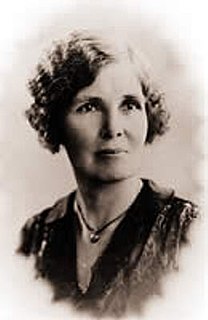
Dorothea Frances Bleek was a South African-born German anthropologist and philologist known for her research on the Bushmen of southern Africa.
People of the Karoo refers to notable individuals who come from, or whose lives have included substantial engagement with, the area known as the Karoo. The Karoo is a widespread physiographic province in the western interior of South Africa, straddling much of the Northern Cape, southern Free State, Eastern Cape interior and parts of the Western Cape Provinces.
The traditional religion and mythology of the San people is poorly attested due to their interactions with Christianity.
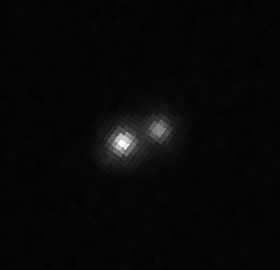
469705 ǂKá̦gára, official designation (469705) 2005 EF298, is a trans-Neptunian object and binary system of the core Kuiper belt, located in the outermost region of the Solar System. It was discovered on 2005 March 11 by Marc William Buie at Kitt Peak Observatory. The primary body measures perhaps 140 kilometers (90 miles) in diameter. Its ≈120-kilometer (75-mile) companion ǃHãunu was discovered with the Hubble Space Telescope in 2009. The ǂKá̦gára–ǃHãunu system is currently undergoing mutual occultation and eclipsing events in which one body casts its shadow upon or obstructs the view of the other.

